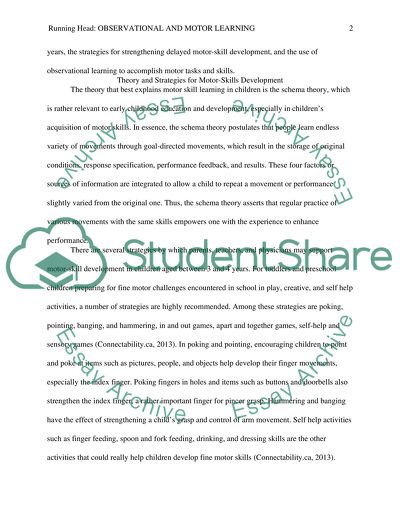Observational and Motor Learning Essay Example | Topics and Well Written Essays - 750 words. Retrieved from https://studentshare.org/psychology/1482583-observational-and-motor-learning
Observational and Motor Learning Essay Example | Topics and Well Written Essays - 750 Words. https://studentshare.org/psychology/1482583-observational-and-motor-learning.


